Endemic species “Level 1*” (“classical”) – Page sponsored by Tody Tours
Family Cuculidae (cuckoos, coucals, anis…) – Tacco d’Hispaniola en français
First publication : 18 June 2021 – Last update : 18 June 2021
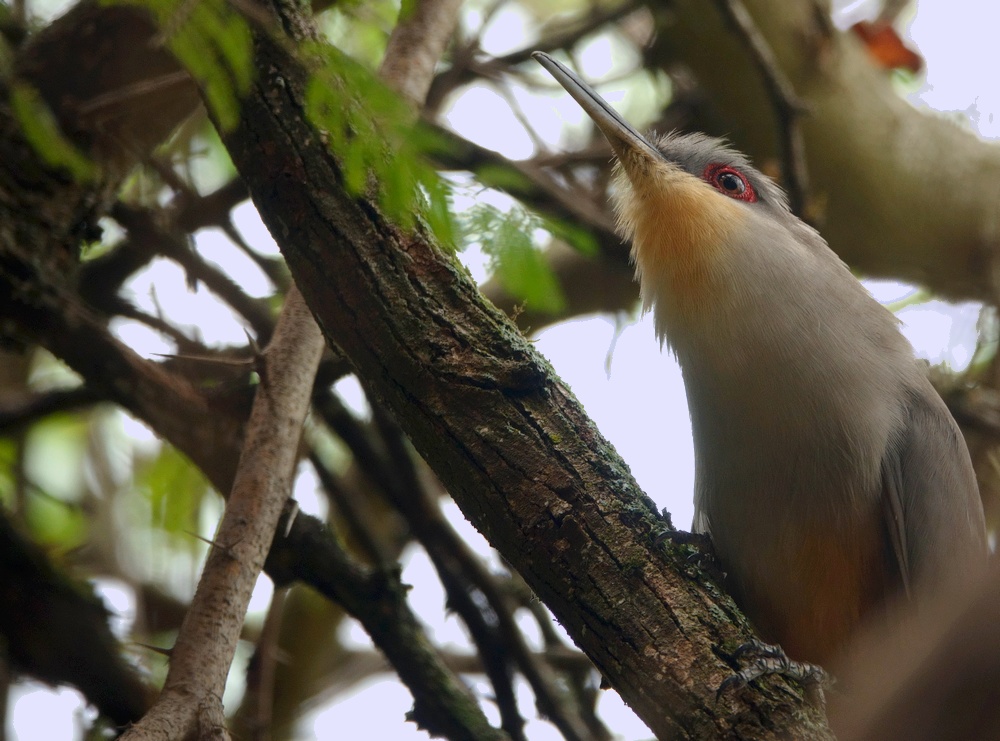
This large and spectacular cuckoo is endemic of Hispaniola (an island shared between Haiti and the Dominican Republic) and some satellite islands, notably the Gonâve. It lives in forests, woodlands and thickets of large shrubs from sea level up to an altitude of 2000 meters.
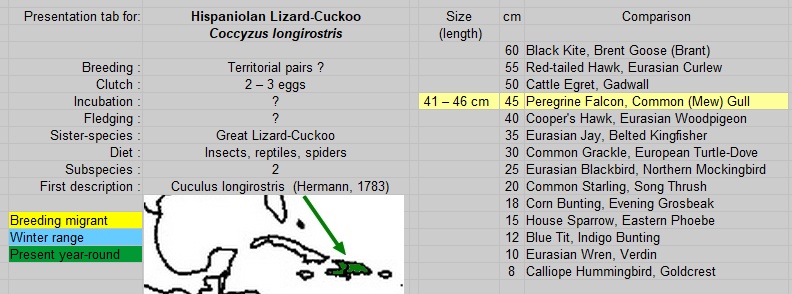
Lizard-cuckoos are long-billed Caribbean species formerly grouped in Saurothera. Recent genetic studies have shown that they are embedded with Coccyzus cuckoos and, therefore, must be transferred to that latter genus. English name wouldn’t change anyway ; the name lizard-cuckoo should be kept for all former Saurothera.
In the field, it is obvious that the general behaviour recalls, on many aspects, behaviour of the Mangrove Cuckoo that is the other widespread cuckoo on the island. The main difference is the diet, in link with the much longer bill. Indeed, the endemic feeds on largest insects such as manties, cockroaches, grasshoppers and damselflies, spiders, lizards and even small snakes.
Breeding is not well known. The nest is a plateform made of leaves and placed low in a tree (most nests found were at less than one meter high) in which two or three eggs are layed. There is no further information available.
A secretive endemic cuckoo, common in the gardens of Villa Barrancolí
My visit at Villa Barrancolí (owned by Tody Tours), a touristic camp built in nature and designed for birders, is the best news of my trip to Dominican Republic. Basically, this is my only interruption in a 12 months journey to Mexico, and the idea was to discover some of the Greater Antillean Islands specialities, as I’ve never been in this part of the world before. Finding a partner that fast was therefore a great luck.
I spent the three first weeks of the trip in Puerto Plata where I had seen some nice endemics, including this cuckoo for which I waited hours to get some decent shots. It was not easy, as it is moving all the time and always partly hidden ; at the end, I didn’t get enough to publish a page.
In the morning in Villa Barrancolí on day #1, from my spacious cabine, its call was the first I heard and I thought having a good shot was a reasonable target. It proved easier than expected : I took the following image while peeling my juicy mangos inside the cabine !
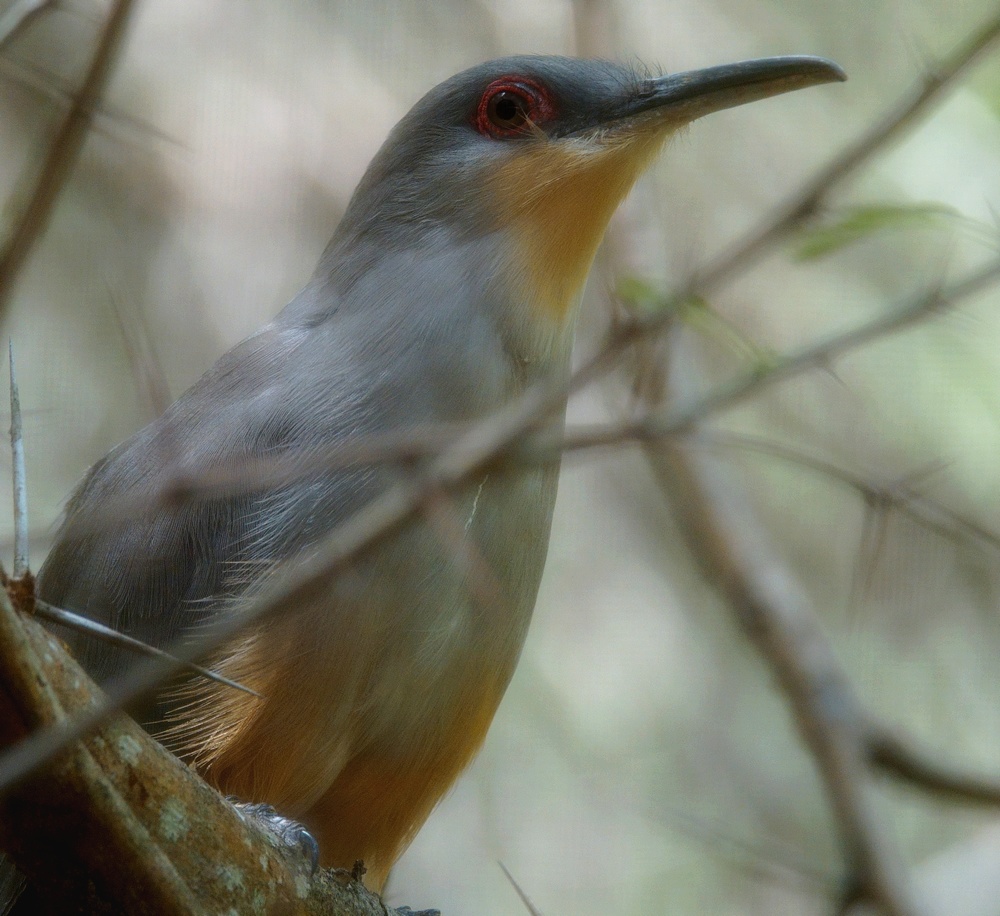
This photo was taken from the cabin at Villa Barrancolí, finally an excellent hide for birding !
Although most are less spectacular, I found many other Hispaniolan endemics in the gardens such as the woodpecker, the vireo, the siskin, the palmchat and more. Pages to illustrate them will be published soon.
Valéry Schollaert
Bonus offered by Tody Tours : the local name in Dominican Republic
Its name is Pájaro Bobo in local Spanish. Pájaro simply means “bird”. “Bobo” is a familiar word for “stupid”, “naïve” or “crazy”. Many birds in different languages received historically such a name related to a behaviour, not well understood and looking “crazy” by humans. It is unclear why this lizard-cuckoo has been seen as “stupid”, possibly because it can very tame while clever birds should rather escape human, a dangerous predator. However, “bobo” may also mean “slow”. Comparer to other skulkers (such as Mangrove Cuckoo or passerines) in the trees, as it is a fairly big bird, his motion is slow. This can be another explanation.
Taxonomy and subspecies
Two subspecies are described. Compared to the nominative depicted here, the Gonâve (Haiti) endemic (C. l. petersi) is paler above and below.
Hispaniolan Lizard-Cuckoo is sister to Great Lizard-Cuckoo (that includes Bahamas population as subspecies).
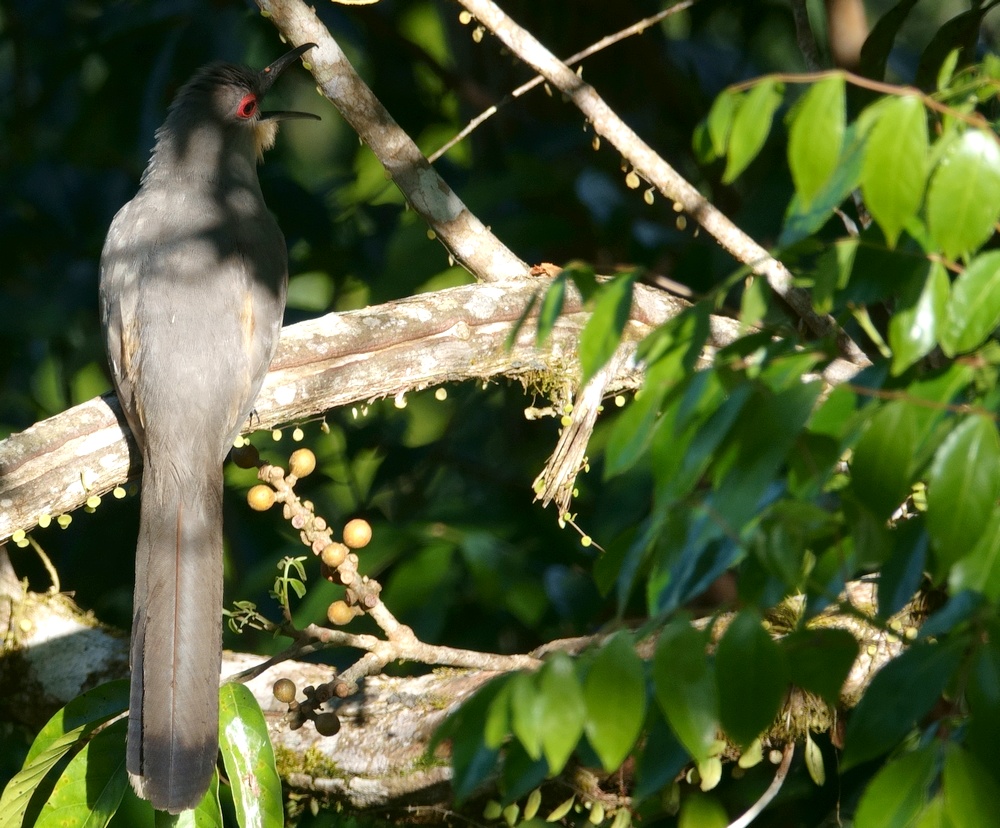
Seen from back, it is a long and elegant bird but little contrasted. Upperparts are often dull in birds to limit the risk of being attacked by predators.
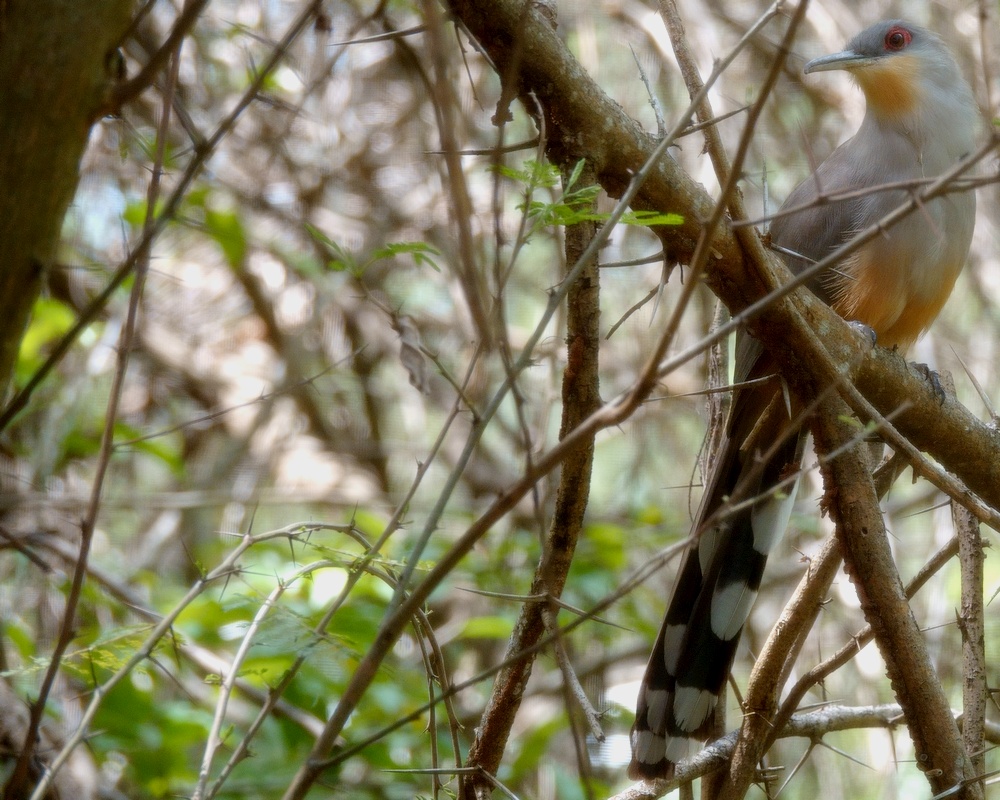
Seen from front, it is a beautiful bird with a nice orange colour on throat and belly. The tail is also attractive and classic in cuckoos : mainly black with large white tips of feathers.
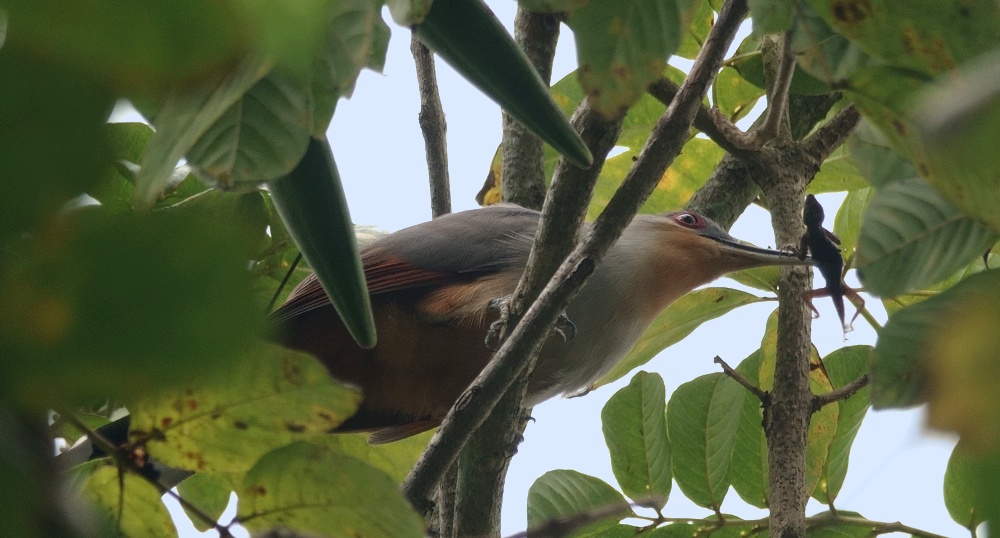
As his name suggests, it is an efficient reptile hunter.
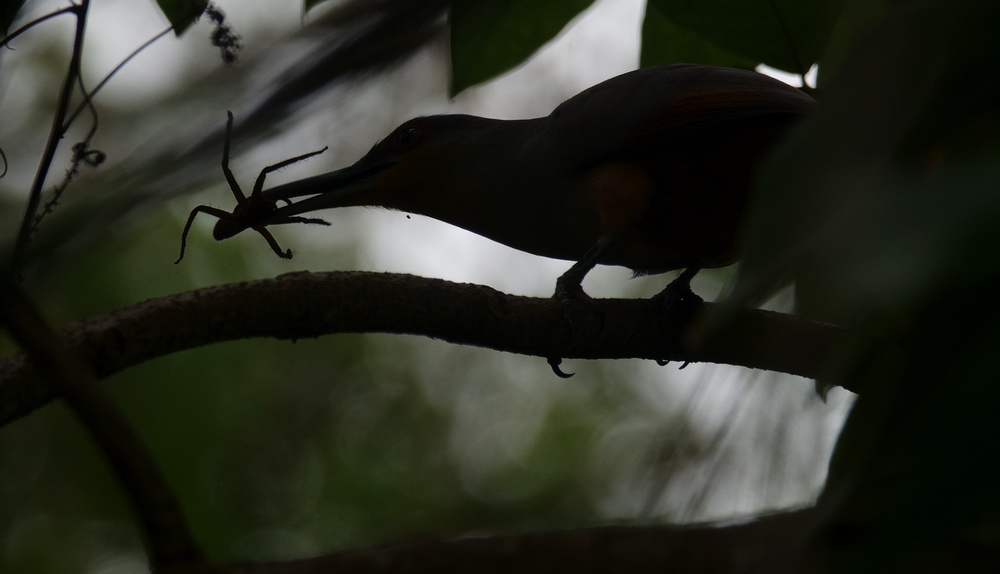
It is often hunting very early: it is one of the first bird heard in the gardens of Villa Barrancolí at dawn. One reason to wake up at this time can be seen here: spiders are much more active at night than during the day.
Next page sponsored by Tody Tours : Hispaniolan Pewee , Black-whiskered Vireo, Hispaniolan Parrot

[Species #1265 of the Holistic Encyclopedia of Birds project]
List of other species pages: taxonomical – day per day

All photos, tab and text are © Valéry Schollaert & Marinella Mejia 2021


I love cuckoos ! This one is beautiful 😍
LikeLiked by 1 person
It is a spectacular one indeed, thank you !
LikeLike
You love parasites ? Hoo, no, this one is not a parasite ! Ha ha, thank you Marco.
LikeLike